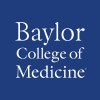
Fludarabine and Cyclophosphamide With or Without Rituximab Before CD19 Chimeric Antigen Receptor...
Recurrent Diffuse Large B-Cell LymphomaRefractory Diffuse Large B-Cell LymphomaThis phase I trial evaluates the best dose, possible benefits and/or side effects of fludarabine and cyclophosphamide with or without rituximab before CD19 chimeric antigen receptor T cells in treating patients with diffuse large B-cell lymphoma that has come back (relapsed) or has not responded to previous treatment (refractory). T-cells are a normal part of the immune system. To make the T-cell medication, T-cells are taken from the blood and altered in a laboratory. They are then returned to the body. The altered T-cells will latch on to a specific part of the cancer cells and hopefully kill them. Once the T-cells have been altered in the laboratory, they are called "CAR T-cells." CAR is short for "chimeric antigen receptors." These are structures on the surface of cells that allow the altered T-Cells to find and destroy the cancer cells. Another part of the T-Cell medication is called "CD19." This part is called a "biomarker." Biomarkers help doctors determine whether a cancer is getting worse and whether medications are working to stop it. The chemotherapy drugs that are given before the T-Cell therapy are cyclophosphamide, fludarabine and rituximab. Rituximab is an immunotherapy drug. These chemotherapy drugs will reduce the number of normal (unaltered) T-Cells in the body to make room for the altered T-cells to kill the cancer cells. Giving fludarabine and cyclophosphamide with or without rituximab before CD19 CAR T cell therapy may help improve response to CD19 CAR T cell therapy in patients with diffuse large B-cell lymphoma.

Loncastuximab Tesirine and Venetoclax for Relapsed/ Refractory Non-Hodgkin Lymphoma
Relapsed Non Hodgkin LymphomaRefractory Non-Hodgkin LymphomaThe purpose of this study is to determine the correct dose and safety of combining two new cancer drugs, loncastuximab tesirine and venetoclax, as a treatment for relapsed or refractory B cell lymphoma.These drugs are used to treat some lymphomas, but have not yet been tested in combination for the treatment of lymphoma. The main goal of this study is to determine the safety of the combination.

CART19 Cells Effects in Patients With Relapsed or Refractory Acute Lymphoblastic Leukemia and Non-Hodgkin's...
Relapsed or Refractory B-cell Acute Lymphoblastic LeukemiaNon-Hodgkin's Lymphoma Refractory2 morePhase I Dose Escalation Study of CART19 Cells for Adult Patients With Relapsed / Refractory Acute Lymphoblastic Leukemia and Non-Hodgkin's Lymphoma.

CD7 CAR T-cell for R/R CD7+ T Cell Lymphoma
Refractory and Relapsed T Cell LymphomaThis is a prospective, open-label, multiple center and single arm phase 2 study to evaluate the efficacy and safety of T cells expressing humanized CD7 chimeric antigen receptors treatment for patients with refractory/relapsed CD7 positive T cell lymphoma.

A Study of MT-101 in Subjects With CD5+ Relapsed/Refractory TCL
LymphomaT-Cell7 moreThis is a Phase 1/2 study to test the safety, tolerability, and efficacy of the investigational agent MT-101 in patients with T cell Lymphoma. MT-101 is made with myeloid cells collected from the patient's blood. The myeloid cells are modified and later infused back into their veins. The modified myeloid cells recognize the tumor cells and are designed to target and kill them.

A Study of TTI-622 in Combination With Daratumumab Hyaluronidase-fihj in People With Multiple Myeloma...
Multiple MyelomaThis study will test the safety of TTI-622 in combination with daratumumab hyaluronidase-fihj in people with relapsed/refractory multiple myeloma. The researchers look for the highest dose TTI-622 that causes few or mild side effects in participants when given in combination with daratumumab hyaluronidase-fihj. Once the researchers find the highest safe dose of each study drug, they will further test the combination TTI-622 + daratumumab hyaluronidase-fihj) in new participants to find out if the combinations are effective in treating relapsed/refractory multiple myeloma. Researchers think that combining TTI-621 or TTI-622 with daratumumab hyaluronidase-fihj, a standard treatment for multiple myeloma, may be an effective treatment approach.

Study to Evaluate the Efficacy, Safety, and Tolerability of IMU-838 in Patients With Relapsing Multiple...
Multiple SclerosisMulti-Center, Randomized, Double-Blinded Phase 3 Study to Evaluate the Efficacy, Safety, and Tolerability of IMU-838 versus Placebo in Adults with Relapsing Multiple Sclerosis (ENSURE-1)

(TAA)-Specific Cytotoxic T-Lymphocytes to Pediatric Patients With Lymphomas (pediTACTAL).
Hodgkins LymphomaNon Hodgkins LymphomaInvestigators have previously used this sort of therapy to treat Hodgkin or non-Hodgkin lymphoma that is associated with the virus that causes infectious mononucleosis ("mono" or the "kissing disease"), Epstein-Barr virus (EBV). EBV is found in cancer cells of up to half of all patients with Hodgkin's and non-Hodgkin lymphoma. This suggests that it may play a role in causing lymphoma. The cancer cells infected by EBV are able to hide from the body's immune system and escape being killed. Investigators previously tested special white blood cells (cells that help the body fight disease and infection), called T cells. The T cells were trained to kill EBV-infected cells and were tested to see whether treatment with these cells could affect these tumors. In many patients investigators found that giving these trained T cells caused a complete or partial response. However, many patients do not have EBV found in their lymphoma cells. Therefore, investigators now want to test whether special T lymphocytes directed against other types of proteins that show on the tumor cell surface can result in similar promising results. The proteins that will be targeted in this study are called tumor-associated antigens (TAAs) - these are cell proteins that are specific to the cancer cell, so they either do not show or show up in low quantities on normal human cells. In this stage of the study, investigators will target five TAAs which commonly show on lymphoma cells , called NY-ESO-1, MAGEA4, PRAME, Survivin and SSX. Investigators will do this by using special types of T cells called cytotoxic T lymphocytes (CTLs) generated in the lab. These TM-specific T cells are an investigational product not yet approved by the U.S. Food and Drug Administration. The purpose of this stage of the study is to find out if TM-specific cytotoxic T cells are safe in children. The investigators want to learn what the side-effects are, and to see whether this therapy might help treat patients who are considered high risk for relapse of Hodgkin disease or non-Hodgkin lymphoma.

Oral Azacitidine for the Treatment of Relapsed or Refractory T-cell Large Granular Lymphocytic Leukemia...
T-Cell Large Granular Lymphocyte LeukemiaThis phase I/II trial studies the best dose, possible benefits and/or side effects of oral azacitidine in treating patients with T-cell large granular lymphocytic leukemia that has come back (relapsed) or has not responded to previous treatment (refractory). Chemotherapy drugs, such as azacitidine, work in different ways to stop the growth of cancer cells, either by killing the cells, by stopping them from dividing, or by stopping them from spreading.

A Study of a Fully Human BCMA-targeting CAR (CT103A) Combined With Selinexor in Patients With Relapsed/Refractory...
Extramedullary Multiple MyelomaThis study is a single-center, open Phase I study, to observe the effectiveness and safety of CT103A combined with different doses of Selinexor in patients with relapsed/refractory extramedullary multiple myeloma, and the pharmacokinetics of Selinexor and CT103A Kinetic and pharmacodynamic characteristics.
